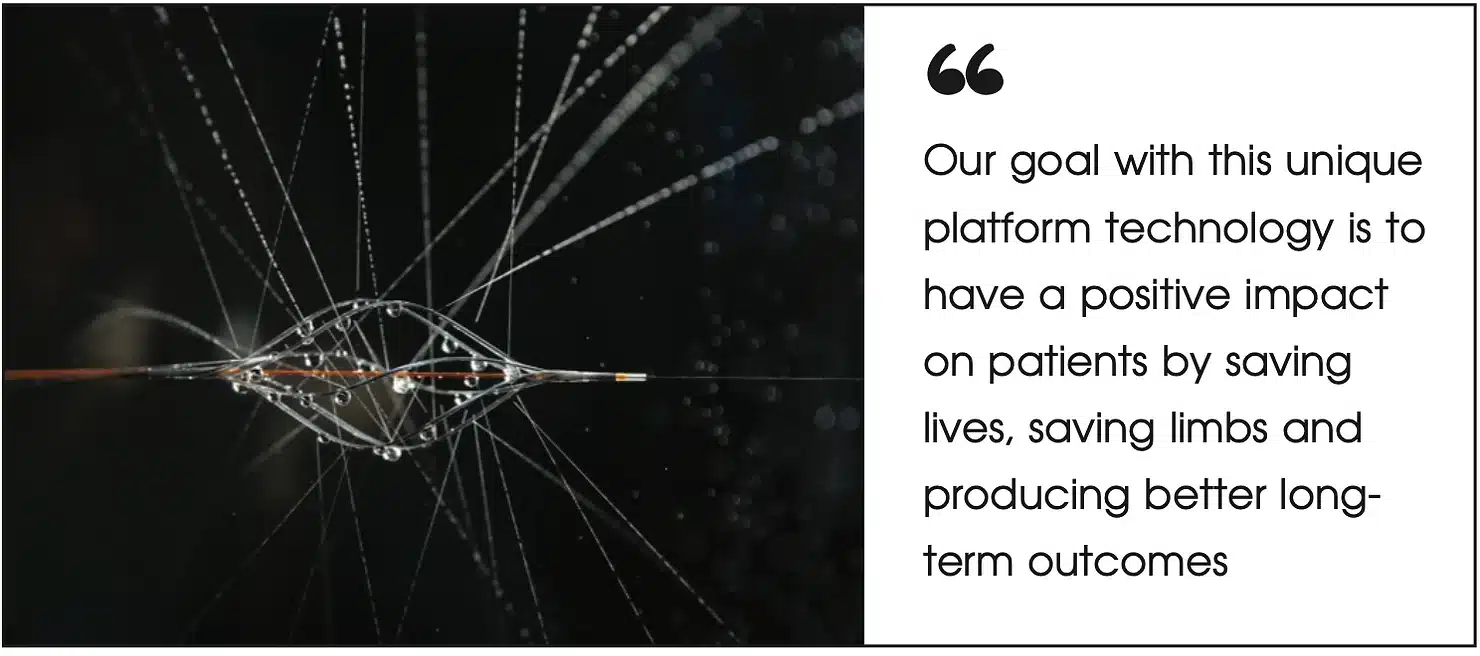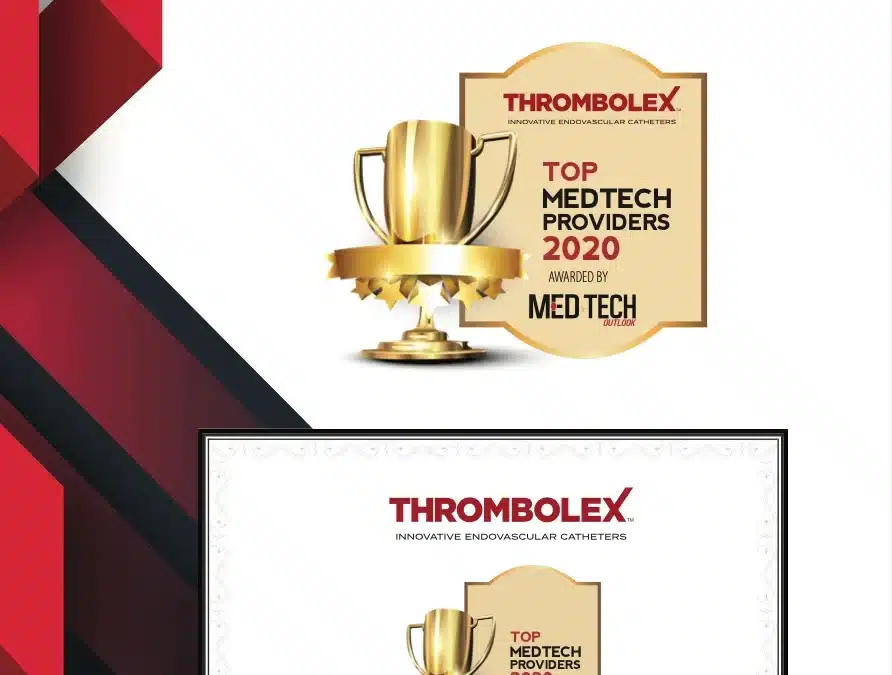PE is the most common preventable cause of death among hospital patients in the United States. VTE is a leading cause of death and disability worldwide and has the third-highest mortality rate out of any cardiovascular disease, behind myocardial infarctions and stroke. Unlike myocardial infractions and stroke, where mortality has improved considerably, VTE has seen an increase in cases, with no demonstrable change in mortality over the past decade. As a result, VTE is widely recognized by CMS as a national healthcare crisis.
The mainstay of treatment for patients with DVT and PE has historically been systemic anticoagulation. The recommended FDA dosage is up to 100 mg of systemic thrombolytics administered over a two-hour period for massive PE. However, up to 50% of patients who present with lower extremity DVT and who are treated with systemic anticoagulation alone develop post-thrombotic syndrome (PTS). Up to 35% to 50% of patients with PE who are treated with anticoagulation therapy alone, experience post-PE syndrome, chronic thromboembolic disease (CTED) and chronic thromboembolic pulmonary hypertension (CTEPH). In addition, up to one third of these patients are readmitted to the hospital within the first ten years post treatment.

Alternative, advanced catheter-directed therapies that could provide more complete resolution of the thrombus burden have the potential to have a positive impact in reducing the incidence of these longer-term negative side effects. These new advanced catheter-directed therapies are also thought to have a positive impact on reducing hospital readmissions. While systemic thrombolytics may be effective at lysing the clot, they may also introduce a high risk of bleeding, including a 2–3% risk of intracranial hemorrhage. This has led to a quest to identify more advanced interventional treatments that carry a much better risk–reward ratio by directing lytic delivery more locally at the culprit thrombus without the risks of severe bleeding complications.
Working diligently to improve treatment of VTE is Thrombolex, a new medical device company that focuses on the treatment of patients that have both arterial and venous thromboembolic disorders. Since its inception in 2016, the Company has developed seven FDA cleared devices. These devices are cleared for the infusion of physician-specified fluids, including thrombolytics in the peripheral vasculature. “One of our goals has been to develop a unique platform technology that is intended to have a positive impact on treating VTE patients, while improving their mortality and their long-term outcomes,” says Michael Cerminaro, President & COO and co-founder of Thrombolex.

Clinical data from several large studies suggest that the use of advanced catheter-directed interventions for the treatment of acute proximal DVT and massive/submassive PE may help to reduce acute symptoms and improve quality of life. Likewise, clinical trials have shown prompt improvement in right ventricular function when treating patients with massive and/or submassive PE. The additional long-term goal of advanced catheter-directed interventions is to improve quality of life by reducing the incidence of PTS in DVT patients, reducing the incidence of CTED and CTEPH in PE patients and to reducing hospital readmission rates by reducing the clot burden.
Thrombolex successfully completed a first-in-human (FIH) trial in December 2019, treating patients with acute submassive PE. This study met its primary safety and feasibility endpoints and showed a robust reduction in right heart strain as evidenced by a mean reduction in RV/LV ratio of 37% (P<0.0009), as well as a 37.1% mean reduction (p<0.0005) in pulmonary clot burden, as measured by the Modified Miller Index (MMI) score following a mean infusion of only 13.7mg of r-tPA over eight hours. There were no adverse or major bleed events. The Bashir Endovascular Catheters have demonstrated an excellent early safety profile. The mechanical action of the Bashir Endovascular Catheter establishes multiple channels of blood flow through the thrombus, which brings the patient’s endogenous fibrinolytics into the clot. This action, coupled with dispersion of exogenous thrombolytic across a broad cross-sectional area of the thrombus, promotes immediate blood flow and enhances fibrinolysis.
During the COVID-19 pandemic, we learned that the virus was not just a disease that attacks the lungs, but also one that can create widespread inflammation and hypercoagulability of the blood stream. In some patients, blood clotting in larger vessels has resulted in DVT, PE, stroke, and even myocardial injury. This has been happening even though these patients, in accordance with standard intensive care practice, are put on blood thinner drugs to prevent clots as soon as they come to the ICU. This COVID-19-related hypercoagulation often does not respond well to standard prevention methods. To effectively treat these patients, Thrombolex has equipped several hospitals with its easy-to-use BASHIR
Interventional Catheters that allow for rapid and more complete resolution of large blood clots in both the venous and the arterial anatomy. Owing to this success, Thrombolex was recently awarded a grant under the CARES Act by Bucks County in Pennsylvania to provide its innovative interventional catheters to numerous hospitals within Bucks County. “The County is supplying hospitals with our devices to help them stock up on critical equipment to assist with the recent surge in COVID-19 patients,” elucidates Cerminaro.
Thrombolex has seen considerable adoption of its unique devices among large academic hospitals, as well as smaller community hospitals across the country and this has ensured substantial growth for the firm. Going forward, Thrombolex has received funding from the National Institute of Health (NIH) to launch a clinical study designed to treat patients with acute submassive pulmonary embolisms. This pivotal clinical study, named RESCUE, is a single-arm, multi-center study, with expected completion in 2021. The RESCUE study is underway and to date it has exceeded its original patient enrollment targets.
Click the link to view the Clinical Excellence Library with our most recent Case Studies.
Here is the original article in Med Tech Outlook Magazine December 28, 2020.
